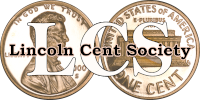First documented PDS *ERROR*
And now for something completely different...
PDS... Planchet, Die, Strike...
These are the 3 types of errors the I am aware of. Maybe there have been some revelations that have occurred over the past 20 years, but as far as I know, PDS are still the three types of errors collected today.
With that said, here we have a historical artifact.
As far as I know, this is the first error coin documented that exhibited all three types of errors on one coin. It was discovered by J.T Stanton. Verified by Arnold Margolis and Lou Coles (as well as other well known numismatists at the time). It was published in Coin World, Numismatic news and many club newsletters. And it was "THE" hot topic in the error collecting community at the time...




Robert Julian
https://www.facebook.com/The-Lincoln-Cent-Society-100642398772232/?ref=page_internal
https://lincolncentsociety.wixsite.com/thelincolncentsoci-1?fbclid=IwAR0CZj-XEHNxKBhu2jnrzzE66P3kce1SEI_KXDNOM_iLw_KZVcVleSLrTBc
Comments
Vey cool and very interesting with all three error types.
BTW, LCS welcome to the forum, you sure seem to know error coins.
We look forward to your posts
So can you give us some insight on how we will know if we have a p,d,s error? It looks to be in the copper plated era.
Hoard the keys.
I question whether that is a clip at K5 , or some sort of chain strike edge.
Noticeably, there is no Blakesley effect, which should actually be more prominent than normal, considering that portion is unstruck.
You’re going to get offers for $80 now
What's referred to by K-4 and K-5? ty.
Hi there Mr GoldenEgg,
A very sharp observation on your part in regard to clip vs edge strike. I am not quite sure if you would see any Blakesley effect on an off center strike. I believe you would only see this effect on coins that are struck in collar. But, hey, it wouldn't be the first time (or the last time) that I have been mistaken.
With that said, Mike Diamond agrees with your assessment of the coin (if that carries any weight on this site). He says that, in his opinion, it looks more like some sort of chain strike than a clipped planchet.
Regardless of it's actual attribution, if we have Sherman set the "wayback machine" to sometime in the mid 80's, this coin was all the buzz...
Robert Julian

https://www.facebook.com/The-Lincoln-Cent-Society-100642398772232/?ref=page_internal
https://lincolncentsociety.wixsite.com/thelincolncentsoci-1?fbclid=IwAR0CZj-XEHNxKBhu2jnrzzE66P3kce1SEI_KXDNOM_iLw_KZVcVleSLrTBc
They are references to the location of the error. the numbers represent the hours (and minutes) of an analog clock or wristwatch...
Robert Julian

https://www.facebook.com/The-Lincoln-Cent-Society-100642398772232/?ref=page_internal
https://lincolncentsociety.wixsite.com/thelincolncentsoci-1?fbclid=IwAR0CZj-XEHNxKBhu2jnrzzE66P3kce1SEI_KXDNOM_iLw_KZVcVleSLrTBc
PDS refers to Planchet, Die and Strike. At the time, they claimed that this coin had a planchet error at K5 and an off center striking error at K4 as well as a clashed die. PDS...
Of course we are a bit more knowledgeable today. If in fact is it a chain strike instead of a clipped planchet, it is no longer a PDS error...
Robert Julian

https://www.facebook.com/The-Lincoln-Cent-Society-100642398772232/?ref=page_internal
https://lincolncentsociety.wixsite.com/thelincolncentsoci-1?fbclid=IwAR0CZj-XEHNxKBhu2jnrzzE66P3kce1SEI_KXDNOM_iLw_KZVcVleSLrTBc
Snip...
SNIP...
Thank you for the kind words. You can call me Bob. Everyone else can call me Mr Julian, but you can call me Bob. :-)
Robert Julian

https://www.facebook.com/The-Lincoln-Cent-Society-100642398772232/?ref=page_internal
https://lincolncentsociety.wixsite.com/thelincolncentsoci-1?fbclid=IwAR0CZj-XEHNxKBhu2jnrzzE66P3kce1SEI_KXDNOM_iLw_KZVcVleSLrTBc
I think that, setting the actual attribution aside, the most incredible aspect of this particular coin is that it was once the possession of JT Stanton as well as Lou Coles. 2 numismatists I greatly admire.
Robert Julian

https://www.facebook.com/The-Lincoln-Cent-Society-100642398772232/?ref=page_internal
https://lincolncentsociety.wixsite.com/thelincolncentsoci-1?fbclid=IwAR0CZj-XEHNxKBhu2jnrzzE66P3kce1SEI_KXDNOM_iLw_KZVcVleSLrTBc
Bob, you are welcome and a great addition to this forum.
Most all the big error guys are on this forum.
Enjoy your time here as this is an amazing coin forum, Chris
PS: On the OP coin, you could weigh to be sure
SNIP...
And the weight is..... Drumroll please.....
40 grains... a tad overweight... Should be 38.5 grains to be exact... So, not a clip...
Robert Julian

https://www.facebook.com/The-Lincoln-Cent-Society-100642398772232/?ref=page_internal
https://lincolncentsociety.wixsite.com/thelincolncentsoci-1?fbclid=IwAR0CZj-XEHNxKBhu2jnrzzE66P3kce1SEI_KXDNOM_iLw_KZVcVleSLrTBc
The Blakesley effect is a result of what happens to the blank within the upsetting mill, which occurs before being struck. As such, the Blakesley effect is going to be present on the planchet before being struck and is usually found on a clipped coin after strike.
Snip...
See, I told you I wouldn't be the last time I was mistaken. :-)
I had always assumed that the Blakesley effect was a result of the strike. The rim opposite the clip did not form because the clipped area produced no offsetting pressure 180 degrees from the clip.
With that said, thank you very much for the input. I can visualize perfectly what u r referring to. Nicly explained...
Robert Julian

https://www.facebook.com/The-Lincoln-Cent-Society-100642398772232/?ref=page_internal
https://lincolncentsociety.wixsite.com/thelincolncentsoci-1?fbclid=IwAR0CZj-XEHNxKBhu2jnrzzE66P3kce1SEI_KXDNOM_iLw_KZVcVleSLrTBc
Thanks for the information on the PDS error.... and the subsequent revision. Cheers, RickO
Very nice and thanks for all the info.
Here is the one I have
Edited to update post with properly aligned and rotated pictures
https://www.pcgs.com/setregistry/u-s-coins/quarters/PCGS-2020-quarter-quest/album/247091